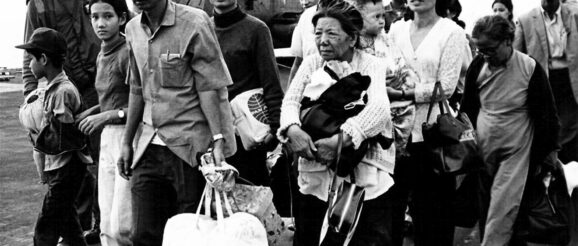A look back at the fall of Saigon and the final days of the Vietnam War The Picture Show

The Vietnam War came to an end on April 30, 1975, when North Vietnamese forces captured Saigon, the capital of South Vietnam. The fall of the city marked the end of the South Vietnamese government and decades of conflict.
In the days leading up to the city’s fall, tens of thousands of South Vietnamese civilians desperately tried to flee, including government officials, soldiers and their families, who feared persecution under the incoming communist regime. Almost all American civilian and military personnel were evacuated from Saigon after nearly two decades of war.
Thousands of people hoped to secure a spot on one of the last helicopters out, in what became the largest helicopter evacuation in history. Some of the most unforgettable images from those final days include South Vietnamese soldiers stripping off their uniforms to blend in with civilians, panicked crowds scaling the walls of the U.S. Embassy, and Navy crews pushing helicopters off aircraft carriers into the sea to make room for incoming flights carrying evacuees.





Jacques Pavlovsky/CORBIS/Sygma via Getty Images

Nik Wheeler/Corbis via Getty Images



Nik Wheeler/Corbis via Getty Images




IMAGO/CPA Media via Reuters

Pictures from History/Universal Images Group via Getty Images
